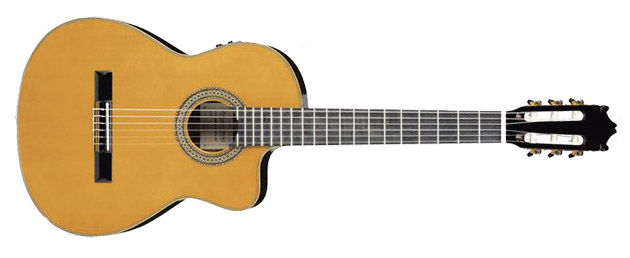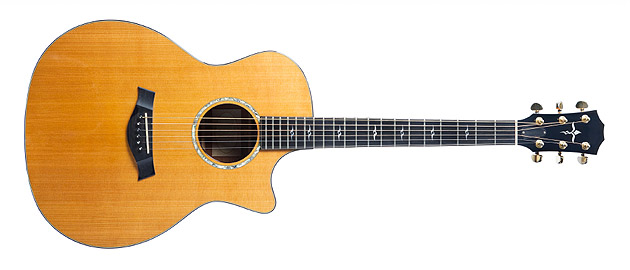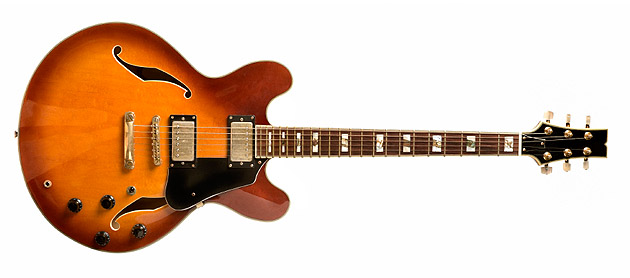The Nylon String Acoustic (Classical Guitar)
The nylon string guitar is often known as a Classical Guitar. The strings are thicker and produce a soft mellow tone. The combination of the soft strings and mellow tone makes it a popular instrument for finger-picking style. The neck is wider than a standard steel guitar and the body is hollow. The guitar is often played with a foot on a footstool with the guitar rested on the raised lap so the strings are at an angle to allow better finger-picking technique. Popular in traditional Spanish folk music and mainly used in classical guitar pieces.

The Steel String Acoustic
Popular with country musicians, the Steel String Acoustic Guitar produces a natural and crisp guitar sound. Like the nylon string guitar, the steel string guitar also has a hollow body which resonate the sound outwards from the body. Therefore they can be played in small environment performances without other amplification equipment.

The Electric Guitar
The Electric Guitar is a solid body instrument popular among many musicians in the world. It has dominated modern music and is versatile in style and sound, being able to create all kinds of tones to suit the style and feel of the song. Most popular with Rock musicians but also widely used in Pop music. The electric guitar comes in all shapes and sizes. However, the most popular are the Fender Strat (as pictured) and the rounded body Gibson Les Paul designs.

The Semi-Hollow Electric
As the name suggests, the semi-hollow eletric is a guitar with a slightly hollowed out body. It is sometimes known as a hollow-body electric. The shape and density of the guitar’s body affects the overall tone of the guitar and in this case, the body produces a warmer tone than solid-bodied electric guitars. Mostly used by Jazz and Blues players, and is also used in some Rock.

The Super-Strat
Super-strats are essentially advanced guitars designed to meet the needs of the generation of virtuoso guitarists that emerged with heavy rock music in the early 80’s, as well as those today!. The demand for faster playing and more complex techniques required a different design of features. These include bigger frets, thinner neck, a more stable tremolo system, locking nut, and hi-gain pickups.

Pickups
Electric guitars use magnetic pickups to transfer the sound from the strings to the guitar’s circuitry. A pickup consists of a magnet wrapped with a coil of a few thousand turns of fine copper wire. The pickup is fixed onto the body of the guitar which pick up the vibrations from strings as well as the subtle resonances of the body.
Guitar pickups come in two main types – the single coil and the humbucker. The single coil is just like its name – a single magnet with a coil of copper wire. However, this can pick up mains hum. This in effect is a feint buzzing sound that can be heard from the amplifier. We won’t go into the scientific details of where or how the hum is produced, but the bottom line is that it’s really unwanted noise. To solve this, the humbucker was created to cancel out the hum. The humbucker consist of two standard pickups wired together with identical coils of opposite magnetic polarity. The opposite polarity cancels out any background hum, but retains the full tone of the strings. An added effect of the humbucker is that both coils working together produce a thicker and fuller tone with less treble and with more lows and mid. This is known as the humbucker tone.
